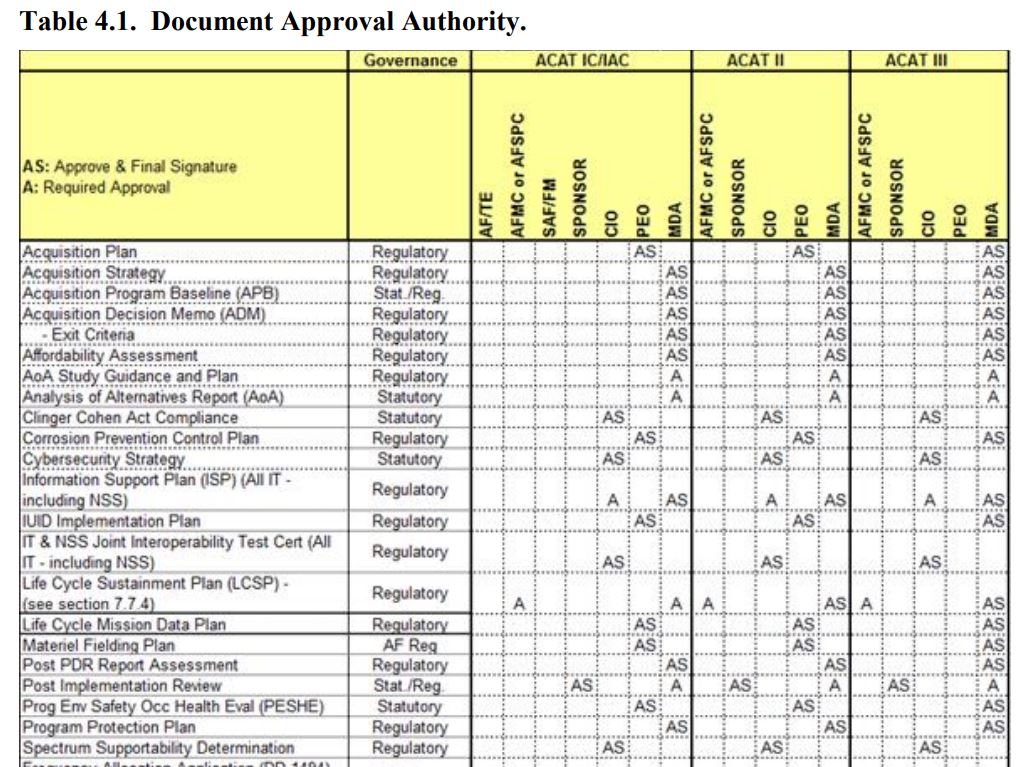Minimize Document Coordination
Coordinating program documentation with many functional organizations at multiple levels of the agency adds considerable time to a program. Countless months are often lost in addressing critical changes, conflicting direction, and ensuring compliance with policies and laws.
PEO staffs should identify who is required to coordinate and approve on each document (from OSD, Service HQ staffs, local commands), ideally broken out by acquisition category (ACAT) or dollar threshold. Each name or organization on the list should be challenged/justified by identifying the role and outcome of the review, to ensure reviews are kept to a minimum. While the documentation of large, billion dollar systems require significant coordination given the size and complexity, smaller or software-intensive systems require a streamlined amount of coordination to support accelerated timelines. There should be a published, current documentation coordination list for the workforce awareness.
AFI 63-101 has an example of who within the Air Force approves each required document based on ACAT level. A table like this could be expanded to note which organizations need to coordinate (C) or sign (S) each document, and which get an info copy (I).
Organizations should integrate a COTS workflow coordination software tool. The tool should allow a program office to add program documentation and notify/alert via email the individual or organization required to coordinate or approve. Approvals should take place within the system with established business rules on timelines (e.g., no response within 10 days signifies concurrence) and changes (cannot have more than two or three rounds of identifying critical issues). This will save considerable time to staff documents.
Program offices should be empowered to tailor documentation to their program’s environment. Based on type of acquisition, size, scope, complexity, and risk, the documents are there to help the program develop and execute sound strategies. The documentation is not intended to ensure compliance with some oversight organization’s standardized approach. Oversight organizations should develop and publish templates and guides for each major document to help the program offices apply the best practices from past programs and ensure critical areas are addressed.
Organizations should establish a SharePoint site or similar knowledge-management tool to store all major program documentation by document type (e.g., acquisition strategy, systems engineering plan, test and evaluation management plan, etc.) and serve as a reference library for programs to use for future documents.
See also: GAO-15-192, DOD Should Streamline Its Decision-Making Process

